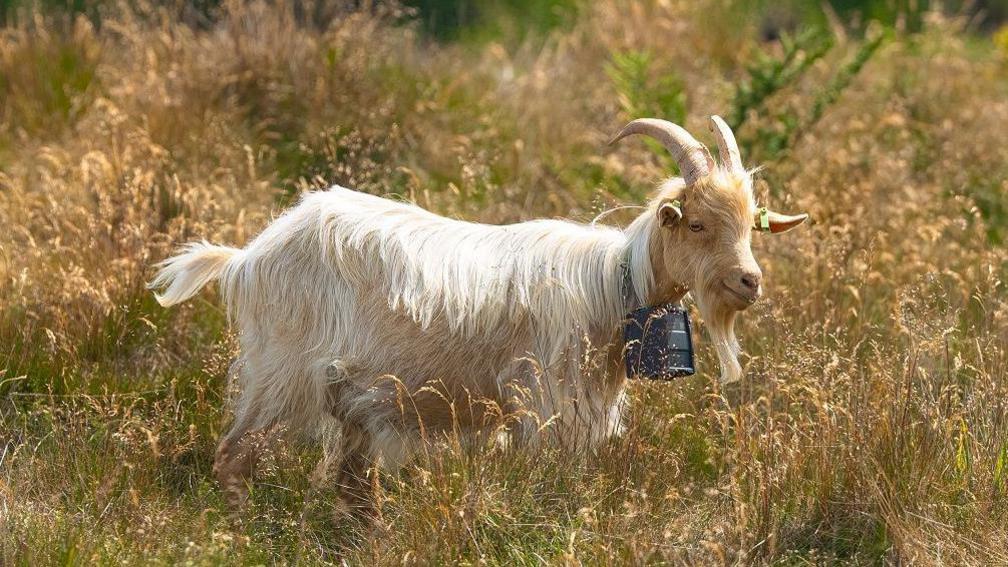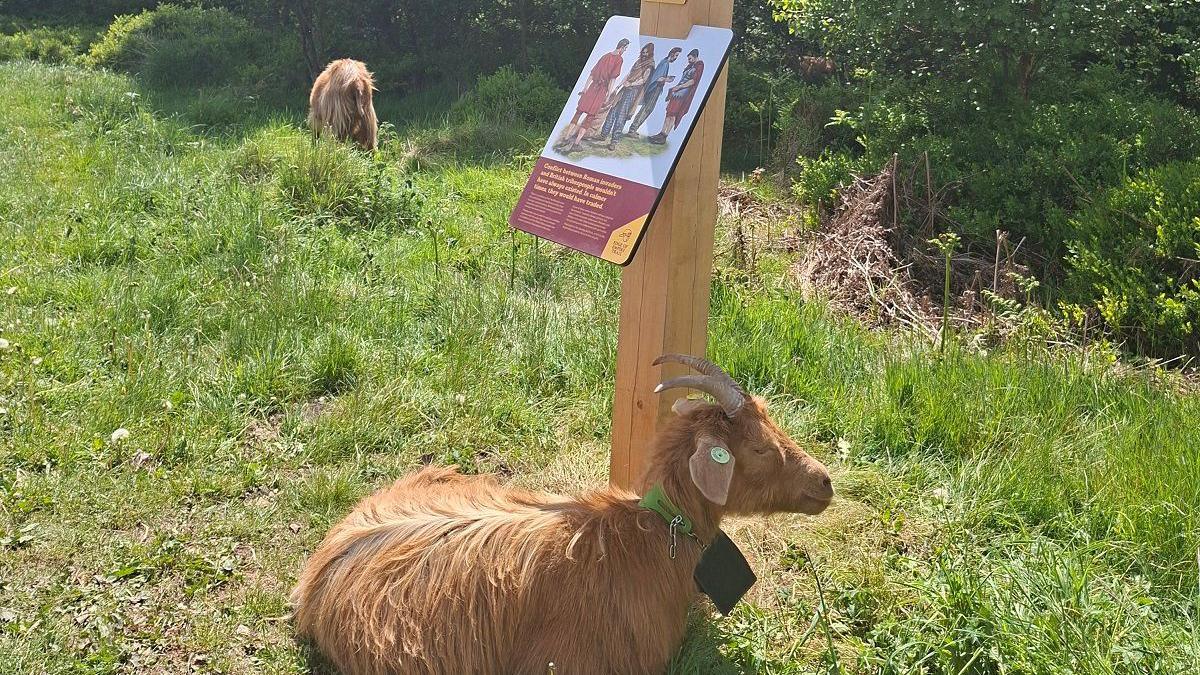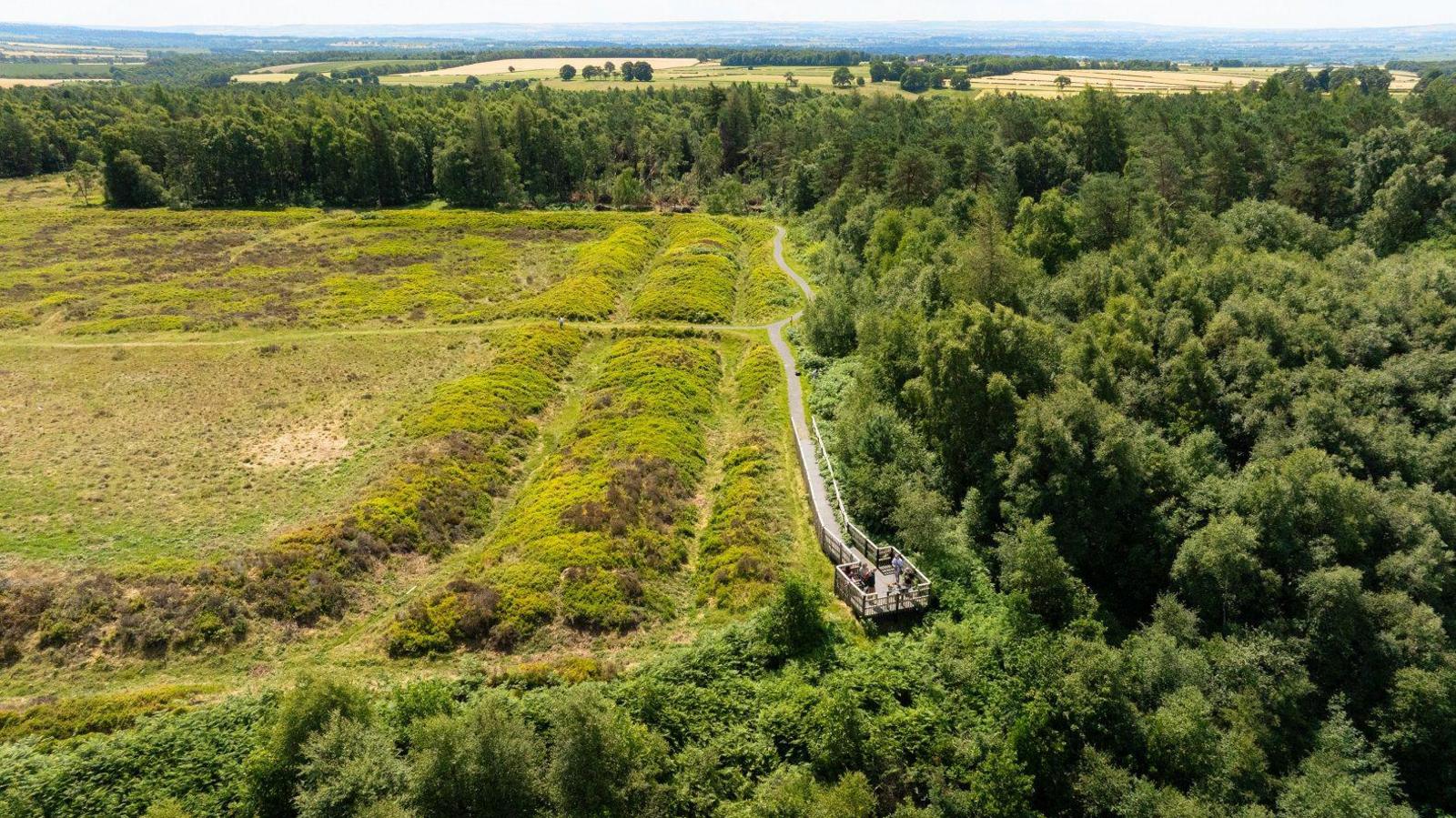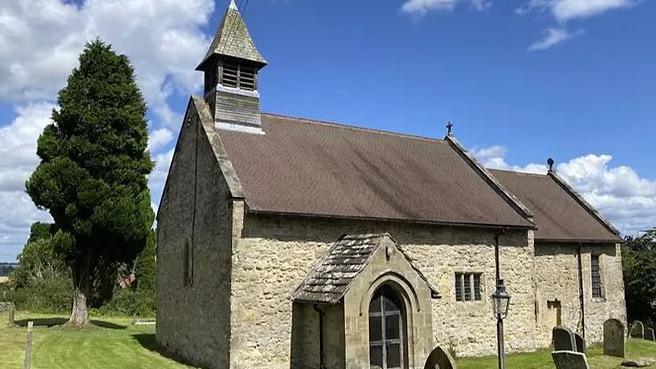Goats on guard to protect national park Roman site

Royal Golden Guernsey goats are protecting the site by eating invasive vegetation
- Published
A herd of goats has been enlisted to protect a new illustrated trail in the North York Moors.
The one-mile (1.6km) trail has been installed around Cawthorn Roman Camps, a 2,000-year-old Roman military site made up of complex earthworks.
Information boards and artwork along the walk will give visitors an insight into life in the network of forts and camps.
Conservation officer Jacob Lawson said the Royal Golden Guernsey goats would act as "conservation grazers" by eating away invasive scrub, brambles and bracken.
"They're doing exactly what goats do best and eating their way through the vegetation that was beginning to encroach on the archaeology and is quite dense in places," Mr Lawson said.
"This is a 10-week trial and something we've never done before, but it's sustainable and a low-impact way to protect one of Britain's most valuable Roman sites, and so far it's been extremely positive."
The goats come from Mossy Oaks at Castle Howard and specialise in bespoke habitat management tasks.

Signs will be in place throughout the trial asking dog walkers to keep their pets on a lead
According to the North York Moors National Park Authority, Roman legions left their fortress in York to conquer the North by defeating and controlling tribes in the region.
They constructed a network of camps and forts connected by military roads, occupying new territory and carving their mark into the land.
The Edge of Empire trail will show what life was like for Roman soldiers stationed at Cawthorn and their tense encounters with the Parisi and Brigantes tribes who lived and farmed in the surrounding landscape.
"Cawthorn is an extraordinary example of Roman military strategy, preserved in the peaceful heart of the North York Moors," said Miles Johnson, head of historic environment.
"The site consists of a complex of earthworks, including two forts and a temporary camp with an unusual layout.
"At one point it was thought the camps were only used for training troops, but now we believe they had a strategic role in exercising control over local tribes and perhaps for short-term occupation during the construction of military roads across the region."

The trail is accessible for all, with no steps or stiles
Mr Johnson said the new trail made it possible to envisage the area's Roman past in a "meaningful and accessible" way.
It has no steps or stiles, and there are sections suitable for wheelchair users and all-terrain buggies.
Signs will be in place throughout the trial asking dog walkers to keep their pets on a lead and reminding owners that livestock worrying is an offence.
Get in touch
Tell us which stories we should cover in Yorkshire
Listen to highlights from North Yorkshire on BBC Sounds, catch up with the latest episode of Look North.
Related topics
Related Internet links
- Published22 November 2024

- Published7 September 2024
